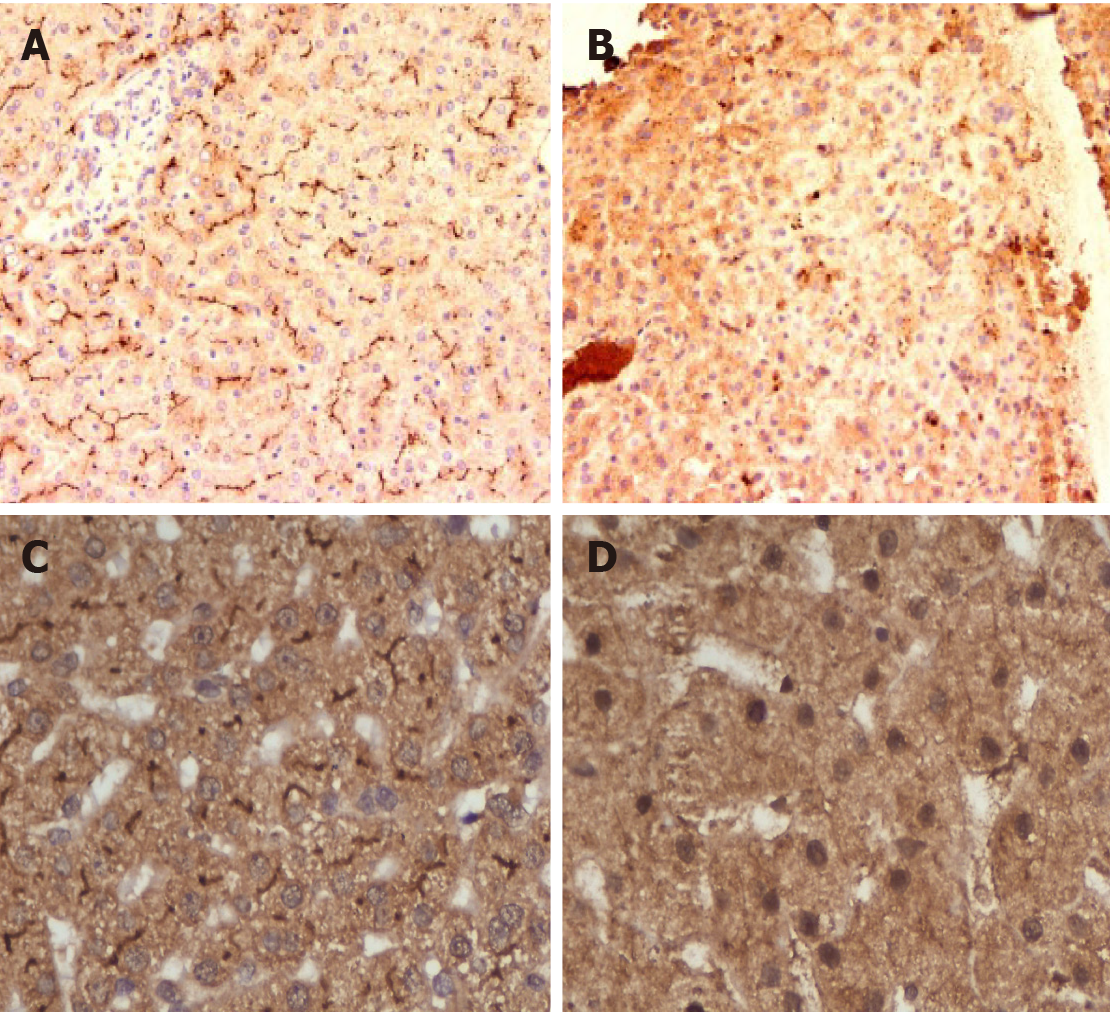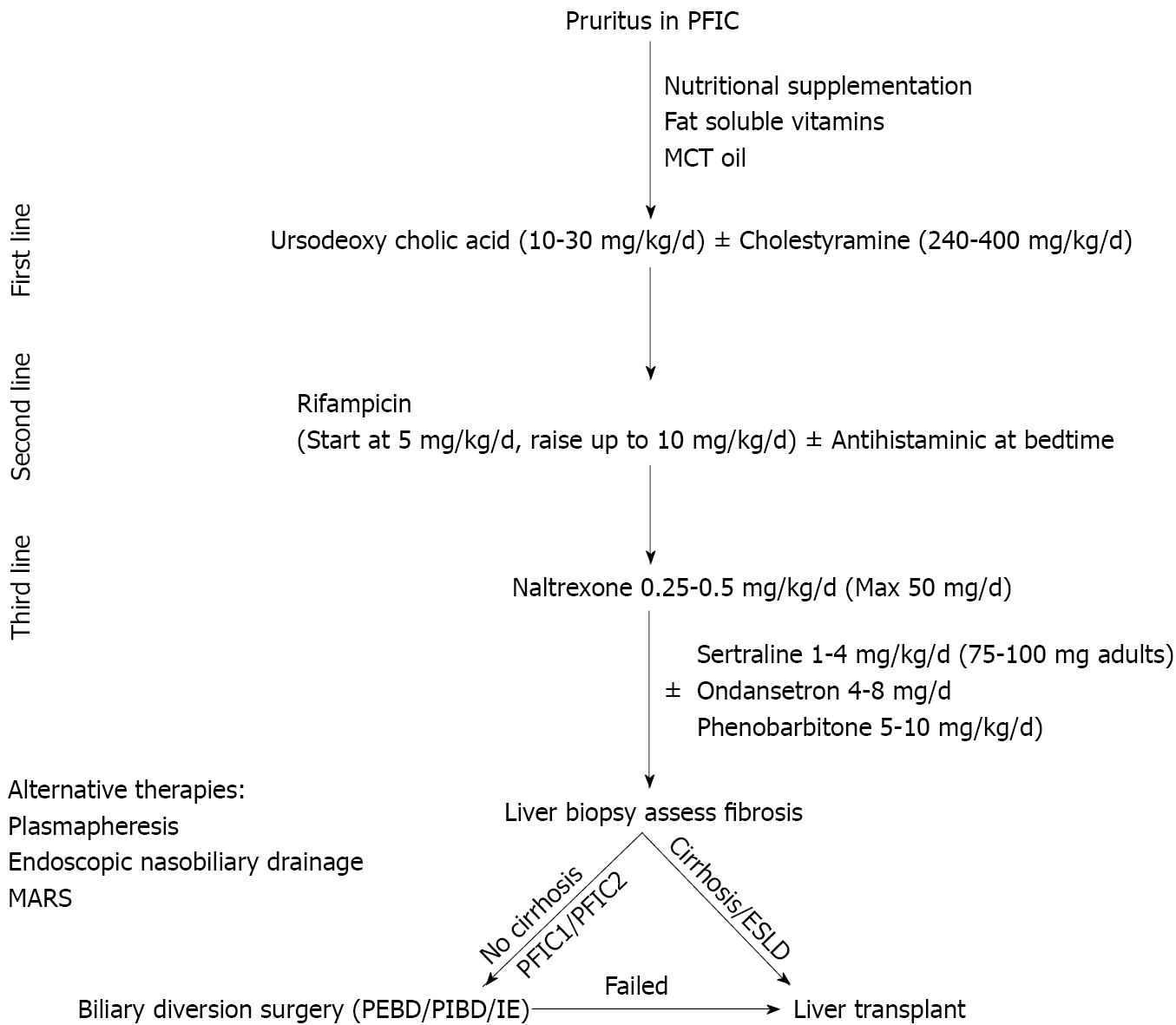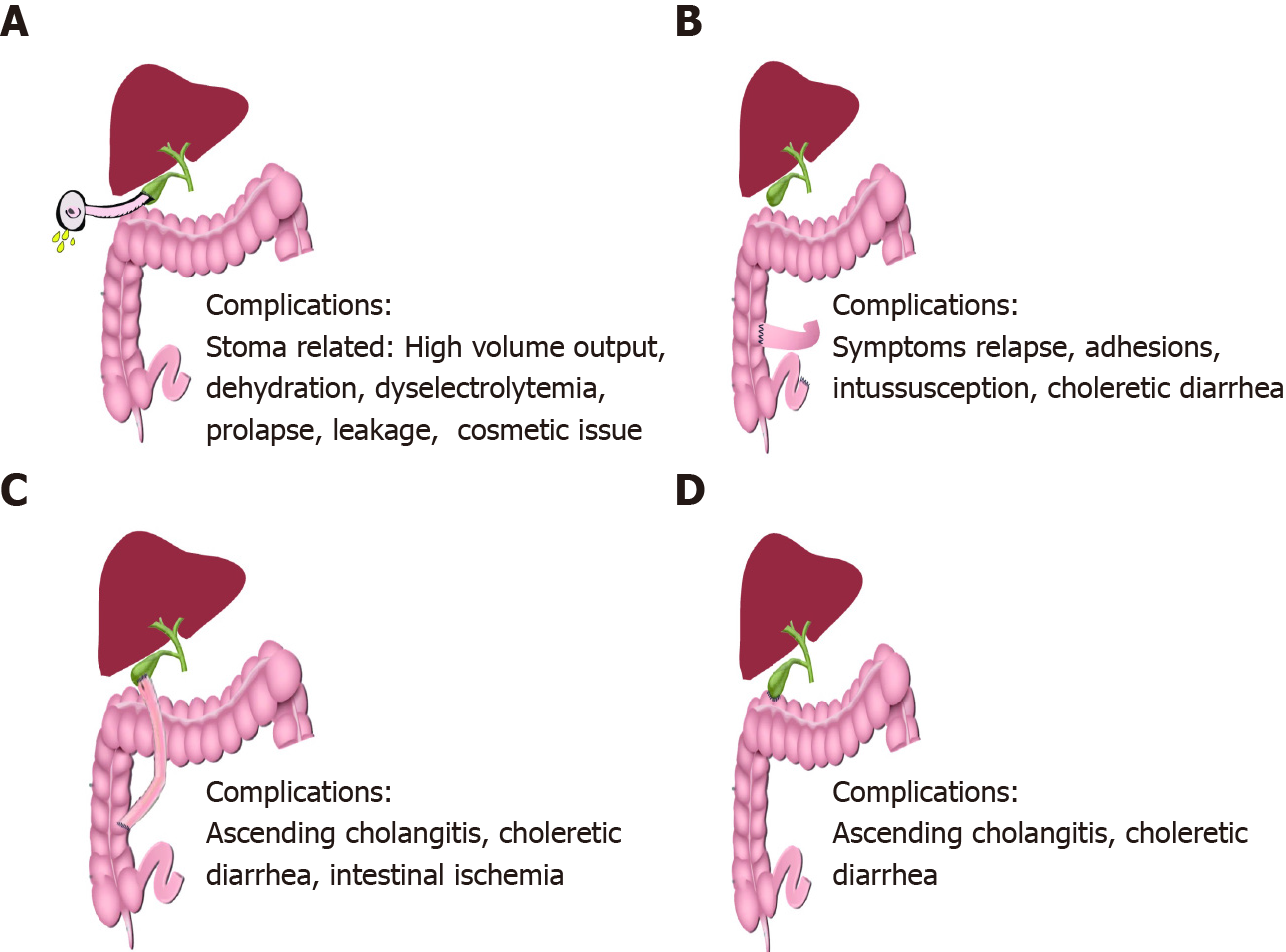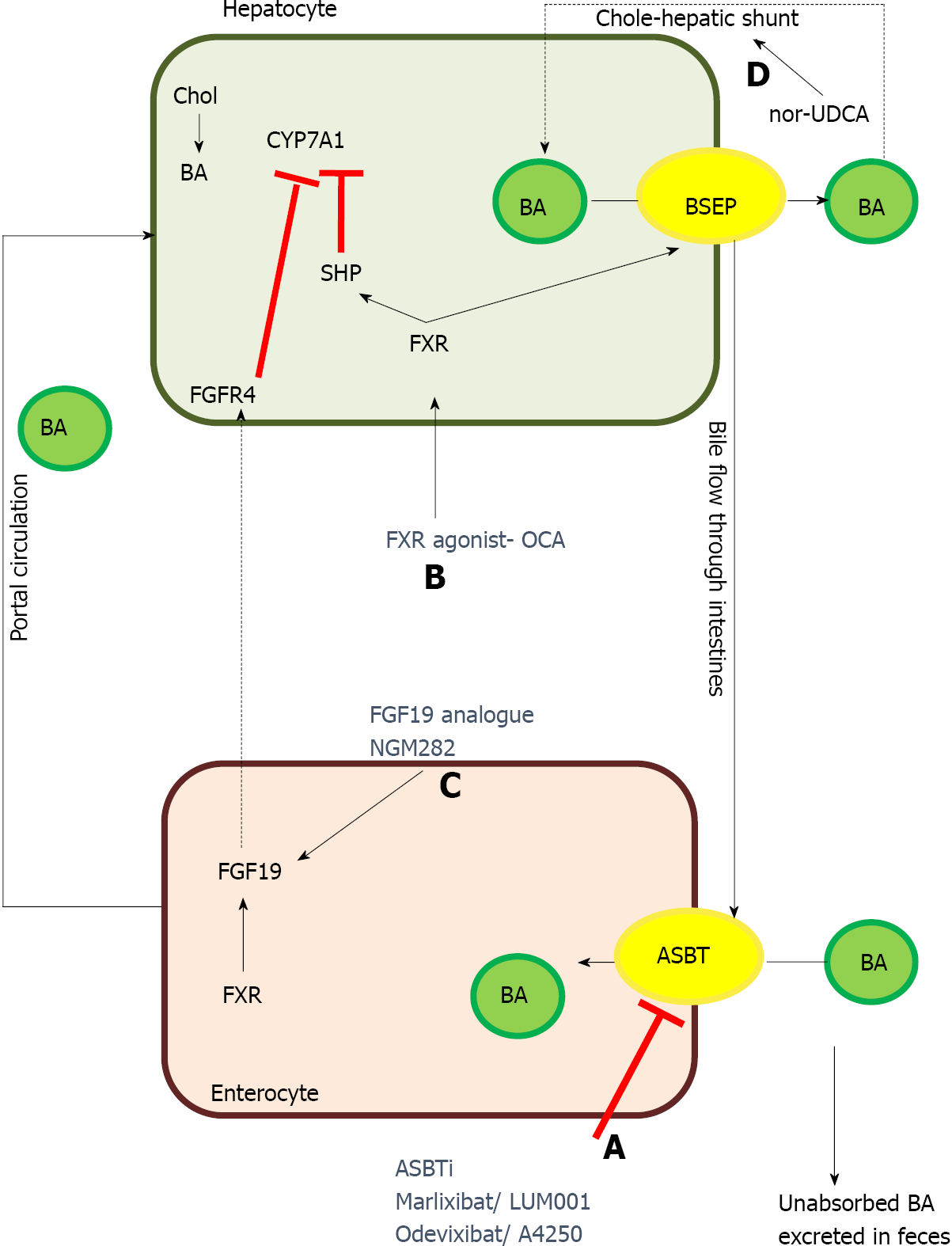Copyright
©The Author(s) 2021.
World J Hepatol. Jan 27, 2022; 14(1): 98-118
Published online Jan 27, 2022. doi: 10.4254/wjh.v14.i1.98
Published online Jan 27, 2022. doi: 10.4254/wjh.v14.i1.98
Figure 1 Bile acid secretion and transport from the hepatocyte across the canalicular membrane and enterohepatic circulation: Role of various transporters involved in transport of bile salts and phospholipids across the canalicular membrane.
Enterohepatic circulation of bile salts and their regulation via farnesoid X receptor - fibroblast growth factor 15/19 is also depicted. ABCB: ATP-binding cassette subfamily B; FXR: Farnesoid X receptor; FGF: Fibroblast growth factor; FIC1: Familial intrahepatic cholestasis 1; BSEP: Bile salt exporter pump; MDR3: Multidrug-resistant type 3; BA: Bile acids; NTCP: Sodium taurocholate cotransporting polypeptide; OATs: Organic anion transporters.
Figure 2 Immunohistochemistry of progressive familial intrahepatic cholestasis type 2 and 3.
A: Normal liver showing canalicular bile salt exporter pump (BSEP) immunostaining; B: Faint BSEP immunostaining in a case of progressive familial intrahepatic cholestasis (PFIC2); C: Normal Liver showing canalicular multidrug resistant protein-3 (MDR3) immunostaining; D: Faint or absent MDR3 immunostaining in a case of PFIC3.
Figure 3 Algorithm for management of pruritus in children with progressive familial intrahepatic cholestasis.
PFIC: Progressive familial intrahepatic cholestasis; MCT: Medium chain triglyceride; ESLD: End stage liver disease; PEBD: Partial external biliary diversion; PIBD: Partial internal biliary diversion; IE: Ileal exclusion.
Figure 4 Schematic representation of biliary diversion surgeries.
A: Partial external biliary diversion: A conduit of around 15-20 cm is made from gall bladder to an exteriorized cutaneous stoma using a jejunal conduit. This conduit diverts a variable (-50%) proportion of bile away from the intestine into the connected stoma bag which needs to be emptied regularly; B: Ileal exclusion (IE): IE involves formation of an end to side ileocolonic anstomosis in such a way that the terminal 15% of ileum is excluded, hence drastically reducing the enterohepatic circulation. The proximal end of the resected ileum is sutured to the colon around 5 cm distal to the ileocecal valve; C: Partial internal biliary diversion (PIBD): The most common technique of PIBD is a cholecysto-jejuno-colonic anastomosis. An isolated jejunal conduit of around 12-15 cm length is created and anastomosed proximally to the gallbladder and distally to the mid part of the ascending colon; D: Another commonly used technique of PIBD is cholecysto-colostomy where gall bladder is directly connected to the transverse colon to partially bypass the terminal ileum.
Figure 5 Therapeutic targets of some of the newer drugs for treatment of progressive familial intrahepatic cholestasis.
A: Apical sodium-dependent bile salt transporter inhibitors prevent the absorption of bile acids in the terminal ileum resulting in significant decrease in enterohepatic circulation of bile acids, ultimately resulting in decreased serum bile acids; B:Farnesoid X receptor agonist acts by increasing bile salt exporter pump expression as well as by inhibiting CYP7A1, the rate limiting step in synthesis of bile acids in hepatocytes; C: Fibroblast growth factor 19 analogue act via fibroblast growth factor receptor-4 and inhibit CYP7A1; D:Nor-ursodeoxycholic acid increases the bile-acid dependent bile flow by increasing the cholehepatic shunt. ASBT: Apical sodium-dependent bile salt transporter; BA: Bile acid; BSEP: Bile salt exporter pump; Chol: Cholesterol; CYP7A1: Cholesterol 7-α hydroxylase; FGFR4: Fibroblast growth factor receptor-4; FXR: Farnesoid X receptor; FGF19: Fibroblast growth factor 19; nor-UDCA: Nor-ursodeoxycholic acid; OCA: Obeticholic acid; SHP: Small heterodimer partner-1.
- Citation: Alam S, Lal BB. Recent updates on progressive familial intrahepatic cholestasis types 1, 2 and 3: Outcome and therapeutic strategies. World J Hepatol 2022; 14(1): 98-118
- URL: https://www.wjgnet.com/1948-5182/full/v14/i1/98.htm
- DOI: https://dx.doi.org/10.4254/wjh.v14.i1.98













